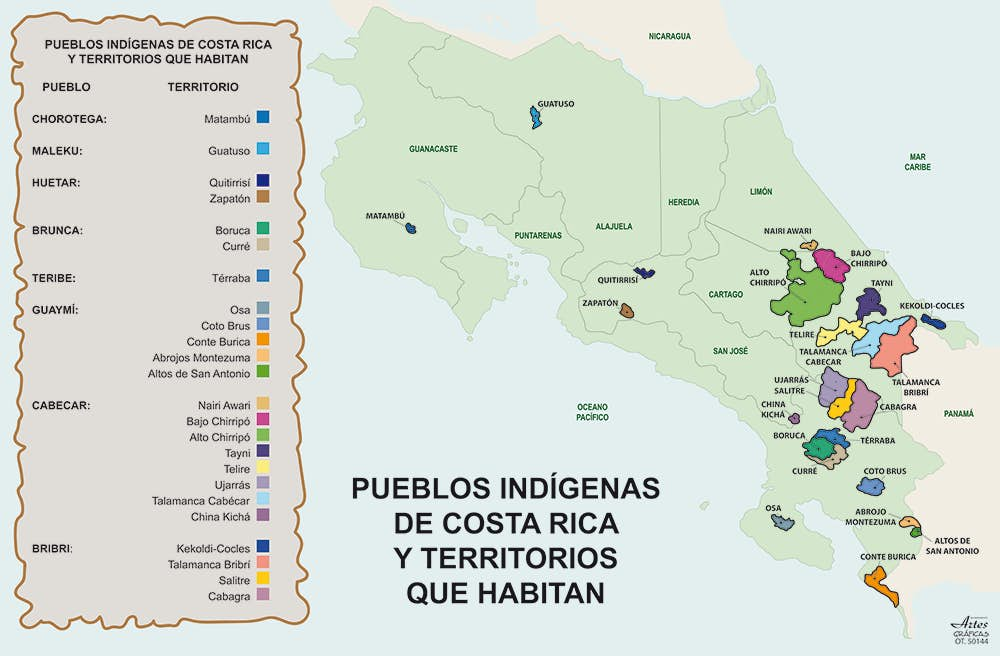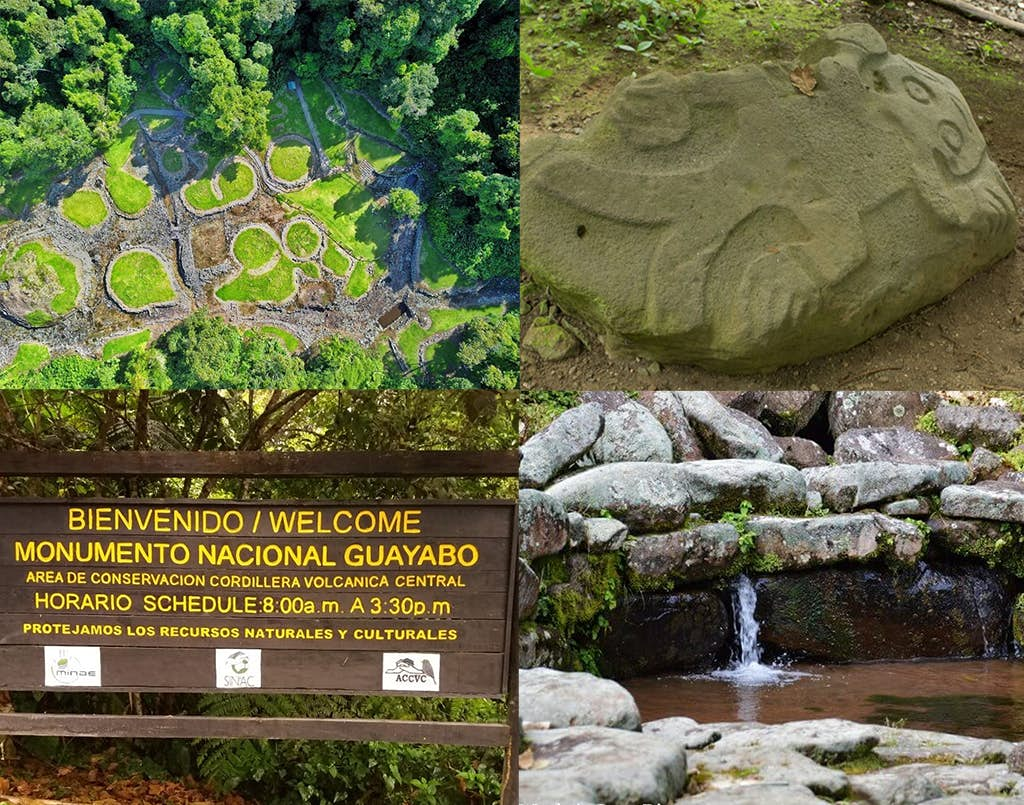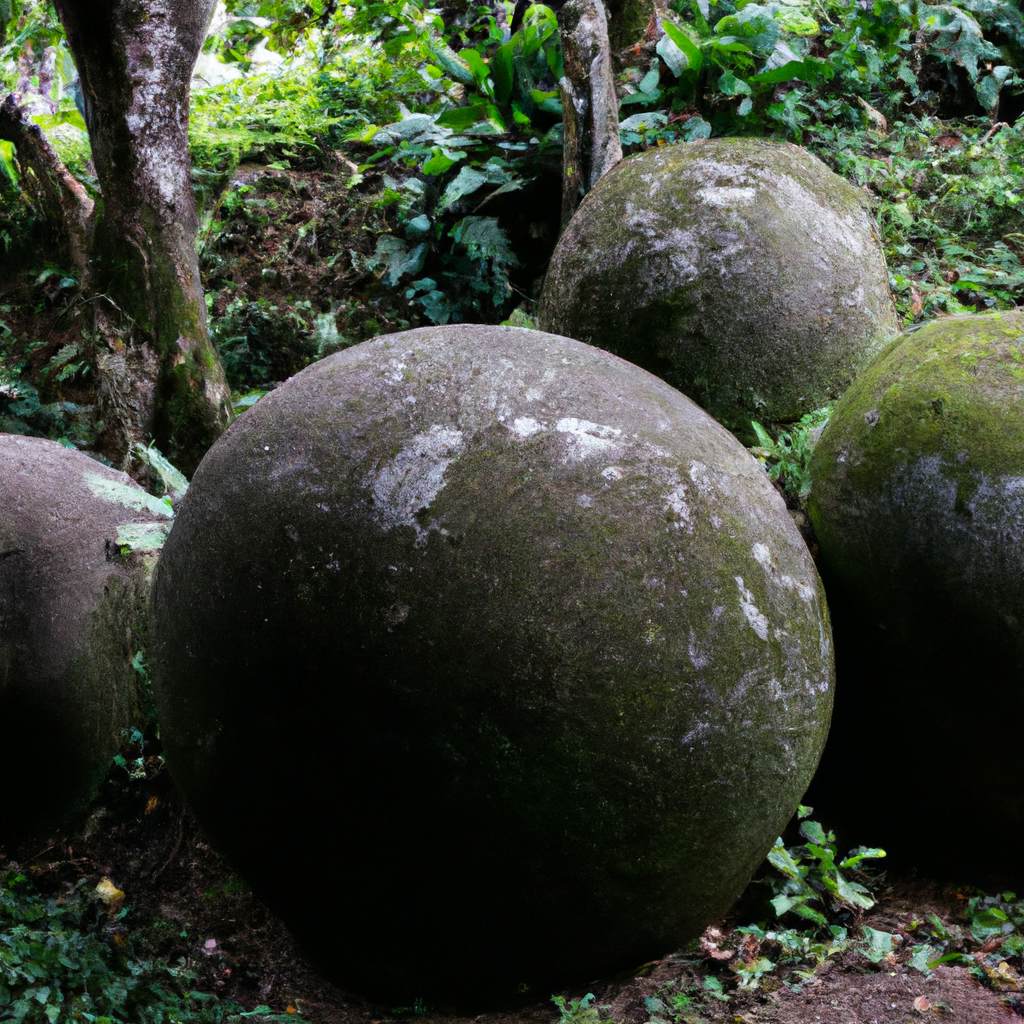Costa Rica's cultural wealth extends beyond its spectacular natural landscapes. In this blog, we invite you to embark on a journey of discovery through the indigenous ethnicities of this country. From the mountains to the coasts, Costa Rica's diverse indigenous communities have left an indelible mark on the nation's history and social fabric. We will explore how these ethnicities are distributed across the territory, taking us on a fascinating journey through their heritage, traditions, and the deep connection they have with the land they call home.
The Richness of Diversity
Costa Rica hosts an astonishing variety of indigenous ethnic groups, each with their own customs, languages, and unique ways of life. From the Bribris and Cabécares in the southern regions, to the Malekus in the north, the Ngäbes in the western region, and the Botos who used to ascend to Cerro Congo in search of minerals, the diversity of these communities provides a window into the cultural richness that has shaped the country over centuries.

A Look at Distribution
Costa Rica's indigenous ethnicities are uniquely distributed throughout the national territory, adapting to the diverse natural environments offered by this country. Below, we will explore some of these ethnicities and their geographical locations:
Bribri and Cabécar These communities primarily inhabit the Talamanca mountains in the southern region of the country. Their deep knowledge of medicinal plants and spiritual traditions has enriched Costa Rican culture. Their lifestyle, culture, and traditions are rooted in this mountainous region. Both groups share geographical proximity and have some similarities in their lifestyle, culture, and traditions due to their close geographic location. While each group has its own cultural identity and language, the Bribris and Cabécares share a historical and geographical context that has influenced their ways of life over time. Both groups are important contributors to Costa Rica's rich cultural diversity and play a crucial role in preserving indigenous heritage in the country.
Ngäbe-Buglé With a presence in the border areas with Panama, the Ngäbes maintain a close relationship with the land and agriculture, preserving their cultural identity through generations. They are experts in craftsmanship, creating beautiful textile and basketry pieces. Their worldview is centered around a harmonious relationship with nature and spirituality. The land and natural resources hold deep meaning in their cultural identity.
Botos The Botos, also known as Votos, inhabited the northern region of the country, specifically in the slopes of the Central Volcanic Mountain Range, near the Poás and Barva volcanoes. They also extended through the plains leading to Lake Nicaragua, along the San Carlos and Sarapiquí rivers. The Botos left their legacy in the northern plains and used to ascend to Cerro Congo, in search of valuable minerals that flowed down the Toro River.
Los Chorotegas Also known as Mange, Cholultecas, Dirián, and Orotina, they have influenced the cultural identity of the Guanacaste region with their art and festivities. This cross-border people inhabit Costa Rica, Honduras, and Nicaragua, and their name Chorotega means "inhabitants of Cholula," in the State of Puebla, Mexico, from where this indigenous people originates.
Huetares The Huetar indigenous group resides in the cantons of Mora and Puriscal, southwest of San José. Their origin is linked to the ancient Quitirrisí or possibly the Huetares, although the available information is limited. Although they have lost their language, they maintain traditions such as music with instruments like the marimba and maracas, as well as corn festivals and the production of chicha. Their economy is based on corn and coffee crops, along with the sale of medicinal plants and crafts made from grass, palm, and plant fibers. These products are marketed in local fairs and centers.
Boruca The Boruca or Bruncas are communities in the southeastern region of the southern Pacific of Costa Rica, residing in a reserve of approximately 140 km² in the Talamanca mountains, with a population of around 2,000 people. Their rich culture is based on the wisdom of the elders and orally transmitted legends. In addition to their iconic wooden masks, their identity encompasses a deep connection with nature and a traditional dance known as the "Game of the Devils," which symbolizes resistance to Spanish colonization. Despite historical challenges, the Boruca have revitalized their original crafts through initiatives like "La Flor de Boruca."
Térrabas The Térrabas, or Teribes, are an indigenous community in the southern zone of Costa Rica. Located next to the Térraba Grande River in Puntarenas, they have about 9,000 hectares where they practice agriculture and cultivate a variety of foods. Although only a few speak the traditional Teribe language, they are in the process of revitalization thanks to the support of the Teribes from Panama, who share their culture and language. This matriarchal community values gender equality and maintains a deep spiritual connection with Mother Earth and the surrounding river, influencing their sustainable production and preservation of ancestral knowledge about medicinal plants. Their history and traditions are intertwined with the land and the river, nurturing a rooted and resilient identity.

Guayabo National Park
It is an archaeological and natural treasure located in the province of Cartago, Costa Rica. This park is home to significant remnants of pre-Columbian culture dating from around 1000 BC to 1400 AD. It is a fascinating place that allows visitors to explore the mysteries of ancient history and connect with the lush nature of the region.
The main archaeological site within the park is the ancient city of Guayabo, which was inhabited by an advanced civilization that built roads, aqueducts, plazas, and ceremonial structures. One of the most notable aspects of Guayabo is the carved stones with geometric shapes and petroglyphs, revealing the skill and artistic prowess of its inhabitants.

Pre-Columbian Stone Spheres: A Cultural Enigma
The enigmatic pre-Columbian stone spheres, known as the "spheres of the goddesses of the forest," are scattered in different regions of the country. Although their exact purpose remains a mystery, these stone sculptures bear witness to the advanced knowledge and artistic skills of pre-Columbian cultures.
Cultural Heritage in Every Corner
Each indigenous ethnicity of Costa Rica brings a unique wealth of traditions, languages, and ways of life. From music to crafts and traditional medicine, these communities have kept their cultural legacies alive despite modern challenges.
The Importance of Preservation
Preserving the indigenous ethnicities is essential for maintaining Costa Rica's cultural diversity and social fabric. Through the promotion of sustainable cultural tourism and respect for their traditions, we can contribute to the preservation of these unique identities.
Exploring at Mistico Park
While Mistico Park does not offer specific activities related to indigenous ethnicities, we recognize and value their influence on Costa Rican culture. Within our facilities, you can immerse yourself in the lush nature that these communities have also called home. Every trail, every hanging bridge, and every panoramic view is a tribute to the land and the people who have cared for it for generations.
Conclusion
Costa Rica's indigenous ethnicities are guardians of a deep and diverse cultural heritage that deserves to be honored and preserved. Their geographical distribution shows the close relationship between communities and the ecosystems in which they have flourished. By exploring these different identities, we can enrich our understanding of Costa Rica's history and cultural richness.









